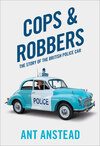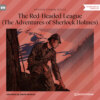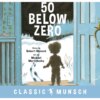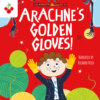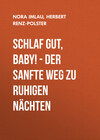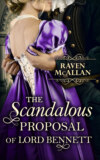Kitabı oku: «Cops and Robbers», sayfa 7
One of Hamphsire’s 1985 Volvo 240PS area cars, photographed at Brooklands’ annual Emergency Services Day (which is well worth attending, by the way). It’s been restored by ex-Hampshire officer Steve Woodward and is the only one preserved in police livery of the 276 244/240 models the force used. The light bar really was a roof-rack-type bar with two lights on, as this image clearly shows!

They were fitted with a switch panel for the police accessories which became almost legendary within the force, because the switches had a particularly tactile, satisfying action. And, okay, I’m admitting it here, I love a good switch action, so I totally get why the purple switches were so loved.

Left to right
S - Stop box on boot flashing stop
P - Police sign
B - Blue lights
H - Headlamp flasher
TT - Two-tone horns
In 1995 BMW entered the medium-sector police market like a bull in a china shop by giving us the 325 TDS. What? Diesel-powered patrol cars? Diesel? Really? No, this must be some kind of a wind-up, surely? Diesel is for tractors and buses! Coppers all over the country were now looking for the culprit who started this vicious rumour. But it wasn’t a rumour; in fact, far from it. BMW had refined the diesel unit to such an extent that it gave the car a huge amount of useable, low-down torque, which was delivered in a very smooth manner without the clanking sounds of previous diesel-powered cars. It was an ideal power plant for area car use, with the added bonus of better fuel consumption and higher mileage possibilities before resale. And, of course, BMW had built its previous reputation on being a driver’s car, so within seconds every copper had a smile on their face once more. Without a shadow of doubt the BMW 325 TDS was a huge success story, not just for BMW themselves but for the police service as a whole. The car had very few vices; it was fast, comfortable, handled well and had that all-important ingredient: presence. It looked the part. Forces all over the UK took them on, and over the next few years and into the twenty-first century the 3 Series has continued to dominate the area car sector because quite simply it’s almost the perfect package.

Volvo story
The early Volvo 244 GLT cars were actually used as Traffic cars for a while alongside BMW 525 saloons. The Volvos were fitted with very nice-looking five-spoke alloy wheels; a first in its class. A traffic unit driving a Volvo 244 GLT picked up a Triumph Trident motorcycle one night that was suspected of doing a big drugs run into the city; the bike failed to stop and a very high-speed pursuit started, with the bike reaching speeds in excess of 100mph. The bike entered the city but its speed rarely dropped below 60mph. A second Volvo area car now joined the chase and positioned itself behind the Traffic car. As they sped towards a large crossroads the Triumph didn’t slow down at all and went straight across it at 60-plus mph. The traffic Volvo hit the brakes hard and the rear nearside of the car slewed to the left. A huge arc of sparks, some 20 feet high, was seen coming from the rear before the car travelled across the same crossroads. Less than two miles later the biker fell off his machine and was arrested. A two-pound bag of heroin was found under the seat. After everything had calmed down a bit, one of the officers present called the traffic officers over to look at their car. We all stood in disbelief as we looked at the rear nearside alloy wheel, which now only had one of its five spokes left! A shudder went down the spine of the driver when he realised that after hitting that kerb he was still driving the Volvo at over 80mph.
Police Constable Gledhill GC
On the night of 25 August 1966, Police Constable Gledhill and his colleague PC McFall were on patrol in ‘Papa 1’, a Metropolitan Police area car, when they got involved in a high-speed chase with heavily armed robbers who fired fifteen shots at them during the pursuit.
For his bravery that day Tony Gledhill was awarded the George Cross; the highest civil award this country can bestow.
The citation for Constable (later Detective Sergeant) Gledhill’s George Cross was published in The London Gazette (dated 19 May 1967), as follows:
Constable Gledhill was driving a Wolseley 6/110 police vehicle with wireless operator Constable McFall, when a message was received stating that the occupants of a motor car had been seen acting suspiciously at Creek Side, Deptford. As the officers reached the area they were looking for, a car (also a Wolseley 6/110) containing five men drove past them.
The officers immediately gave chase to the suspect vehicle which was being driven recklessly through the streets of South London, travelling on the wrong side of the road and against the one-way traffic system. In such conditions Constable Gledhill exercised considerable skill in following, at high speed, and in keeping up with, the vehicle.
During the chase, which covered a distance of 5 miles at speeds of up to 80mph, an attempt was made to ambush the police vehicle and no fewer than 15 shots were fired at it by the occupants of the suspect car, using a sawn-off shotgun and revolvers. Pellets from the shotgun struck the windscreen of the police car on three occasions.
Finally, at a road junction, the escaping car crashed into a lorry. The five men immediately left their vehicle and a group of three ran into the yard of a transport contractor.
The officers followed the group of three and as the police car reached the yard gates the men ran towards it; one of them was holding a pistol. He then proceeded to hold it to Constable Gledhill’s head. He ordered the officers to get out of the car or be shot. Both officers left the car and the man with the pistol got into the driving seat with the obvious intention of using it to make a getaway.
Constable Gledhill, then backing away across the roadway, was targeted again as the man reversed away from the gates towards him, pointing the pistol at him as he did so.
However, when he stopped to engage first gear he momentarily turned his head away and Gledhill immediately grabbed hold of his gun hand. As the vehicle moved off, Gledhill managed to hold on to the car window with his left hand.
While this was happening, Constable McFall had run along the roadway to a group of men in order to get a lorry driven across it in the hope of blocking the hijacked police car, when he heard Constable Gledhill shout.
He ran back to the police car and saw him holding on to its window. He then saw the vehicle gather speed, dragging Gledhill along the road. At this point the front offside tyre burst, the car veered across the road, crashed into parked vehicles and Gledhill was thrown under one of them. McFall opened the front passenger door and as the driver was still holding the pistol, began hitting him about the legs and body with his truncheon.
Gledhill had then regained his feet and as he approached the driver’s door it was flung open, knocking him to the ground.
The man got out of the car and backed away from the officers. He warned them not to move and at the same time fired a shot. The Constables then heard the gun click and both rushed at the man, and as McFall struck at him with his truncheon Gledhill grabbed the man’s right hand and took the gun from him. There was a violent struggle and the gunman fell to the ground, trying desperately to reach the inside of his jacket.
At this stage other officers arrived. The man was subdued and another gun, an automatic pistol, was found in the pocket of his overalls.
Both Gledhill and McFall received injuries and had to receive hospital treatment. They had faced a sustained firearm attack and from the early stages knew the risks they ran of being killed or seriously injured.
For his conduct, Constable McFall was awarded the George Medal.
During an interview in late 2010, Gledhill was asked how accurate the citation was, to which he replied, ‘It’s actually a pretty good description of what happened’. On being asked why he and PC McFall got called to the scene, he answered, ‘It was the school holidays and a school caretaker’s son happened to look out of a window and saw five men putting on masks and dungarees and getting into a car. He told his dad and his dad called the police.’
Gledhill was asked what kind of car the robbers had. ‘Actually, they had a car just like ours – another Wolseley – but in a two-tone blue colour. The only difference was, theirs was manual’. This actually makes the chase even more impressive, an automatic Wolseley, on cross-ply tyres, chasing a manual version, at speeds of up to 80mph, in the wet!
Of the chase he said, ‘Once or twice I thought I would lose it. Not long after the start of the chase it started to go and I said, “I’m going to lose it”. Terry, my wireless operator, replied, “You won’t, you won’t, you won’t.” And I didn’t!’
Tony explained what Wolseleys were like as police cars: ‘I used to really like them. They were not too bad at all. When I first passed my police driving course at Hendon, in 1963, I was based at Lee Green Police Station driving Wolseley 6/90s. They were much heavier. The 6/110s were nicer to drive, although around South London you could rarely get any speed up (but you could really get your foot down on the Sidcup Bypass!). I enjoyed getting up a good speed in them.’
By the time of the incident Tony was based at Lewisham Police Station.
‘We had two Wolseleys at our station and there were three shifts. The cars were always used alternately unless there was a breakdown.’ On being asked if he drove the Wolseleys all the time, he answered, ‘No, as a policeman in those days you might find yourself on the beat for six or nine weeks, or as a police van driver on van duty, or driving the area cars (the Wolseleys).’
He was asked whether he was involved in the maintenance of them. ‘No, but we were lucky as the Traffic Division workshops were on site at Lewisham so we didn’t have to take them anywhere. The area car I was driving on the day was my favourite. Its call sign was “Papa 1” (registered CYK 360C).’
Tony was asked the question that is always asked of people who have done incredibly brave acts in the face of death or serious injury, ‘What made you do it?’ His answer? ‘I have no idea.’
Burned-out Senator story
There’s nothing an area car driver likes more than to borrow a Traffic car if theirs is in the workshops for some reason. And there’s nothing a traffic cop hates more than having to lend one of ‘their’ cars out to a lowly area car driver, especially if they return it dirty or with no fuel in it.
Within my office, despite our best efforts to deny our area car colleagues the loan of our cars, we were told in no uncertain terms by the white shirts that the cars were in fact a force resource and not our own personal transport. So it was one wet wintry evening that the phone rang. It was the area car crew from Havant nick with the question that I didn’t really want to answer: Could they borrow a car for the night shift as theirs was off the road? We ran a 50/50 fleet of BMW 525i saloons and Mk2 Vauxhall Senator 3.0i 24-valve cars at the time and I told them to take the oldest car on the fleet; a K-reg Senator. After giving them the usual lecture about fuel and washing it down before returning it, I went home.
The next morning as I sat in the kitchen eating my breakfast, I switched on the local radio station to listen to the news. It was the main headline, ‘Police car explodes into flames in Havant after crashing into a gas main but thankfully with no injuries!’ A wry smile came over my face but it was immediately wiped off when a local resident was interviewed and stated that it was ‘one of them motorway cars’.
It transpired that the area car crew were on a shout, in the wet, and as they negotiated a right-hand bend they lost it, over-corrected it, entered the forecourt of a local house and collided with a cast-iron box about two feet square that contained the mains gas pipe to the house. The Senator landed on top of the box and as the escaping gas met the exhaust manifold … boom, up it went. That same local resident went on to say that the 20-foot-high flame coming through the bonnet resembled one of those Bunsen burners we used at school! Needless to say, we didn’t get the Senator back and the area car crew never asked us for another one!

CHAPTER SIX
PANDA CARS
‘Panda Car; noun (plural, panda cars), a police patrol car; originally white with black stripes on the doors.’
Oxford Concise Dictionary
It’s not every day you discover that one of Britain’s best-loved institutions is wrong! But then it is somewhat of a surprise that the term is in the Oxford Dictionary at all. What is annoying but not a complete surprise is that their definition is wrong, because it states that the cars were white with black stripes on the doors. Over the years, the public’s perception of what constitutes a ‘panda car’ has become blurred, so maybe now is the time to put to bed a few misconceptions, blow away a couple of myths and establish once and for all that not all police cars are in fact pandas.
So, let’s go back to the Oxford definition. Where did the name ‘panda’ originate? And why has the term continued to be used into the twenty-first century when the last real panda cars became extinct way back in the early 1980s?
Mid-1960s Britain was facing a bit of a police recruiting crisis; there simply weren’t enough officers to go around (nothing new there, then!), particularly on the big new housing estates that were being built all over post-war Britain. It must be remembered that most policemen during this period walked the beat or rode a bicycle and police cars were few and far between. Sure, every force had a Traffic Division, whose responsibilities consisted of attending road traffic accidents, escorting abnormal loads and, in one or two counties, policing the new motorways. Traffic didn’t attend such routine calls as domestic disputes, pub fights or kids kicking footballs against people’s windows.
Most stations would have had access to a van to transport prisoners, and there might have been an unmarked car that could be used by a supervisory officer of at least Sergeant in rank, to check up on the foot patrols at various ‘points’ throughout the day. As a member of the public requiring police attendance you could wait quite a long time for an officer to plod his way across his beat to get to you, and it has to be said that the beat bobby could be virtually invisible to the public, especially at night. The modern-day notion that in the ‘good old days’ there were 6-foot 5-inch coppers everywhere you looked, clipping young scrumpers around the ears, is little more than an urban legend, a myth that has been told over and over again and even appeared in Just William and other fiction. If your beat was just one mile square it would take you all day to patrol every street just once, therefore these legends of law enforcement were certainly not seen on every street corner, outside every school or lurking behind the walls of every orchard.
And therein lay the problem. There just weren’t enough coppers to go around. And society in general was moving faster as cars became more accessible to the general public and reliable, too. The solution to this dilemma was brilliant, Unit Beat Policing, or UBP, changed the face of policing in Britain. In 1964 the Chief Constable of the Lancashire County Constabulary, Colonel Eric St Johnson, who was a frequent visitor to the USA, had noticed that in many cities their patrol cars were black with white doors and had the word ‘police’ on them, surmounted by the town’s coat of arms. This made them stand out from the usual plain cars used by the public so that they were easily identifiable as police cars. He brought the idea home and had a couple of Mk3 Ford Zephyr 4s, which until now had been unmarked crime cars, dragged into the police workshops where they were resprayed into the blue and white colour scheme. Colonel St Johnson liked the idea that light blue be the chosen colour because he was a Cambridge University man! He worked with William ‘Palf’ Palfrey, the Chief Superintendent of Accrington, a division within the Lancashire County Constabulary that developed theories on how policing would change post war to cope with the needs of changing work patterns, mobility and mechanisation. Experiments with detailed versions of the basic idea were carried out in both Kirkby and Accrington; the Accrington idea being foot patrols backed up by teams of mobile detectives rather than bobbies moving between ‘beats’.
Lancashire has long been recognised as an innovative force, and the concept of using blue and white cars developed very quickly during the Zephyrs’ trial period in Kirkby – and of the two towns this was considered the very much more successful system.
Because the cars were readily identifiable as police cars, the force could use them to cover a greater area far better and quicker than a bobby on foot patrol. The cars were an instant success and there were calls to expand the idea. At the same time officers were being issued with new hand-held Pye pocket phones, a two-piece personal radio which meant they could now keep in touch with the station. The logic wasn’t that cars became the patrolling medium; the theory of Unit Beat Policing was that the bobby on the beat drove to an area, did a foot patrol, then drove to another area and did another foot patrol or waited to speak to members of the public by his car. Of course, as radio response became ever more immediate, this blurred – but that’s another story. The Government were very much keeping track of these experiments and eventually carried out further trials. The idea was even debated in Parliament under reforming Home Secretary Roy Jenkins at one point; if you are of a mind, you can read this on the Hansard Parliament website. Have a pot of strong coffee to hand.
Lancashire led the way, and in the wake of their success the Government issued a recommendation that forces follow their lead. Ironically, one of the last forces to adopt the system was the Met, who waited until 1970 and then, rather amazingly, introduced Morris Minors as pandas rather than more up-to-date cars, because Morris Minors were a known reliable car that was available and cheap, even if the basic design was from 1948 and the car was getting close to ceasing production – which it did in 1971. As explained elsewhere in the book, the Met had to buy cars that were built in Britain. Some forces, especially those with very different population densities and topography, never adopted the panda car system although they may have used the livery on their cars to a greater or lesser extent. These included the Stirling and Clackmannanshire Police, the Grampian Police and others.
In 1966 Lancashire ordered the first official panda cars. They opted to buy a huge number of Ford Anglia 105Es, 175 in fact, to be used as part of this new ‘Unit Beat Policing’ scheme. On 1 May 1966, local dignitaries and the press were invited to attend Lancashire’s HQ at Hutton for the official launch of the scheme before a mass drive-off of all 175 brand-new blue and white Ford Anglias. The Anglia was chosen because it was cheap to buy, at just £500, and easy to maintain. It didn’t need to be a performance car, as part of the scheme was for the officer to drive to part of his beat, park up in an area where the public could see him, put his helmet on and either walk that part of his beat for a while or wait for the public to approach him by his car. The car didn’t need two-tone horns, just the distinctive blue and white paint to make it stand out.

So where did the term ‘panda car’ come from? None of us has ever seen a blue and white furry bear (well, I hope not for your sake) so it is likely that the name stems from the fact that press interest in this new policing initiative was huge and there were photos of the cars printed in the papers, which of course made them look black and white. The name was either penned by a journalist or more likely was coined by a Lancashire Police mechanic who, whilst reading one of said papers, passed comment that they now looked like pandas! Whichever one it was, the name has now become part of the English language and is a term still used today by police and public alike who are too young to have even been born when the first Anglias rolled out across Lancashire’s sprawling housing estates.
It has also been suggested that the name originated from the term ‘Pursuit and Arrest’, but this isn’t true because the cars were never intended for pursuit purposes. Just to add to the confusion, a couple of years after Lancashire launched the scheme the Home Office conducted an experiment along similar lines with a number of forces being required to paint some of their cars, both unit beat cars and traffic patrol cars, in black with white doors. Forces like Durham, West Riding, Salford City and Plymouth City Police painted cars like the Ford Zephyr, Hillman Hunter, Austin Westminster, Morris 1800S, Mk2 Jaguars and Mini vans in the distinctive colour scheme. They looked great and enhanced the visual impact of the cars, just as Colonel St Johnson had seen in the USA several years earlier. Somewhere along the way things may have blended together and become a bit confused, but whatever the case, the panda car name has stood the test of time even if the original concept hasn’t.
Just about every force in the UK took the system on board, and from 1967 onwards blue and white panda cars were seen everywhere, making the thin blue line a little more pliable. But by 1979 the panda car’s days were numbered, because the police service was being forced to make drastic budget cuts (again, it appears nothing changes …) by the new Conservative government. The fleet manager of the Hampshire Constabulary looked out of his office window at a yard full of blue and white Minis and Mk2 Ford Escorts and concluded that to order the cars in either Bermuda blue for Leyland products or Nordic blue from Ford cost him extra. To then paint the doors white and have to re-paint them blue again prior to selling them off at auction cost £80 per car. He dropped the blue cars, ordered them in white and at the stroke of a pen the idea was lost forever. Fleet managers talk to each other on a regular basis and it wasn’t long before other forces followed suit, although one or two forces like Cheshire and North Wales Police persevered for several years and still had a number of Mk2 Vauxhall Astras and Austin Maestro vans in the familiar colours into the mid-1980s.
Enough of the history, let’s talk cars! So, if Lancashire used the Anglia, did everyone else use the same car? No, thank goodness.
There was a huge variety in the models used, in the make-up of the colour scheme and in the equipment used in or on the cars. But the type of car remained the same; they were basic run-of-the-mill, bottom-of-the-range, small-engine vehicles that were cheap to buy and cheap to run.
The ubiquitous Morris Minor saloon will be forever remembered as the archetypal panda car – I’ve even used it on the cover of this book – but not every force used them; far from it in fact. The Metropolitan Police, who were one of the last forces to adopt the unit beat scheme, were avid users of the Moggy but also ran fleets of Anglias, Austin 1100s and later the Austin Allegro and the Talbot Sunbeam.
Other forces included Devon, Derbyshire, Bristol City, Sheffield City, Glamorgan, Dyfed-Powys, Cheshire and Edinburgh City, but no doubt the Minor found favour with several others, too. The marque was perfectly suited to this type of work – it was easy to drive, reliable, cheap and (back in the day) looked the part. It wasn’t just saloons that were used either. Believe it or not, the Traveller was used by the Devon Constabulary, Edinburgh City, Leicestershire and Rutland, Wolverhampton Borough and the Ministry of Defence Police. The Minor vans, often referred to as 7cwt vans, had already been used for a number of years as Dog Section vehicles and in plain wrappers as SOCO (Scene of Crime Officer) and Photographic Department units. But now some forces started to paint them in blue and white to utilise as panda cars; however, the Wiltshire Constabulary painted theirs in tan and mustard – apparently they thought that this scheme might blend in rather nicely in the countryside where these cars were used as rural beat units. What were they thinking? The colours made a mockery of the fact that the cars were to stand out from the crowd, not blend in with the hedgerows! Wiltshire stuck with their unusual colour scheme and in later years used it on the Austin A35 van and even the Mk1 Ford Escort. But the Morris Minor has stood the test of time as there are about 20 former police Morris Minor 1000s still in existence with enthusiasts – more than any other type of police car in history. I have even raced against one owned by Chris Rea. He and I had a great battle at Snetterton while I was in the seat of an Austin A35.
Unusually, the Lothian and Peebles Constabulary’s Minors were in the darker Trafalgar Blue and White livery rather than the lighter Bermuda Blue used by most other forces. This was specified by the then Chief Constable, Willie Merilees, who wanted them to stand out from the lighter blue of the otherwise similar Edinburgh City cars.
